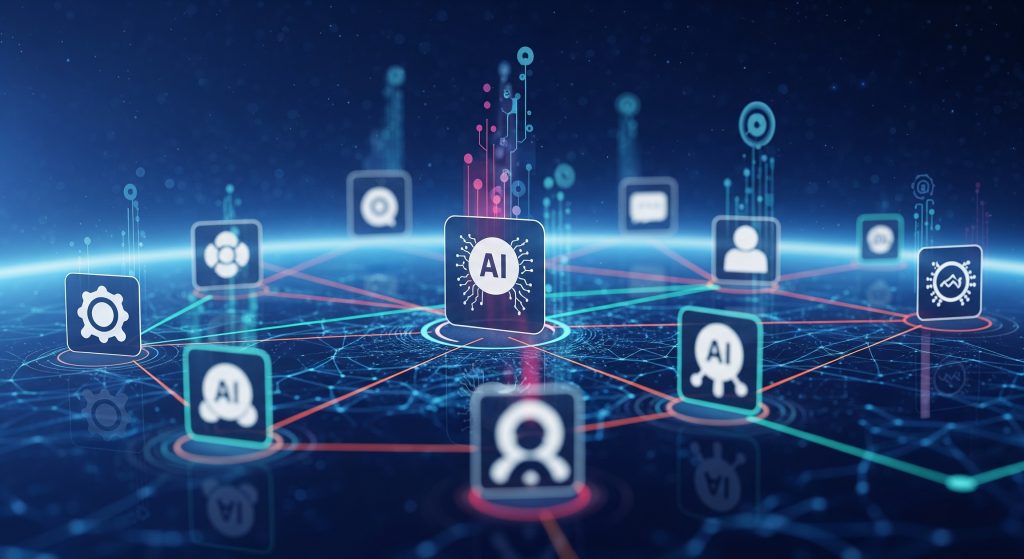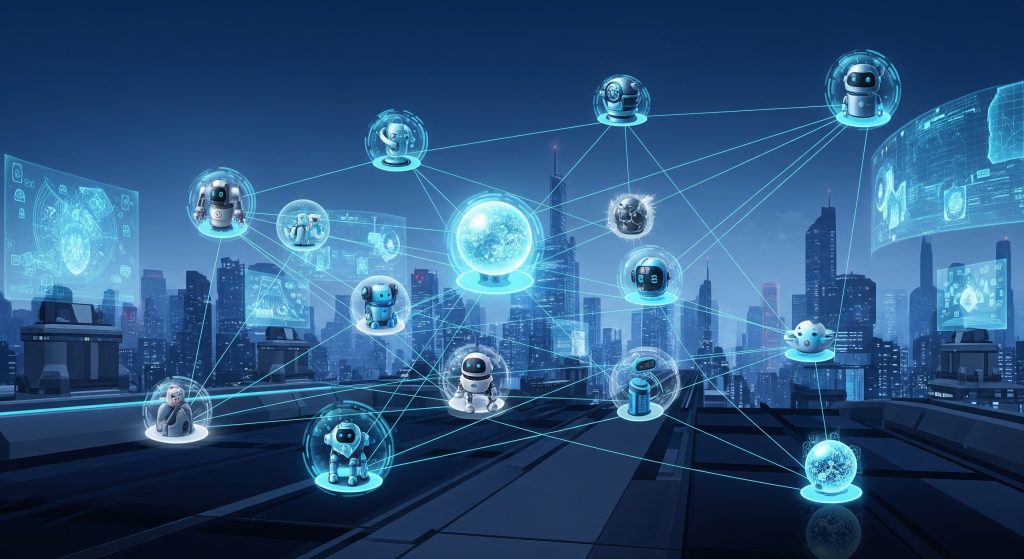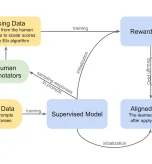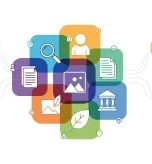Throughout this series, we’ve explored what makes individual AI agents effective – how they use tools, access information, plan their actions, and remember previous interactions. But there’s a natural question that emerges as these systems become more sophisticated: what happens when a single agent simply can’t handle the complexity or scale of what you’re trying to accomplish?
Sometimes the answer is building a more powerful individual agent. But sometimes, the solution is fundamentally different: creating teams of specialized agents that can work together to tackle challenges that no single agent could handle effectively.
Today we’re diving into multi-agent AI systems – when they make sense, how they work, and perhaps most importantly, when you definitely shouldn’t build them.
When One Agent Hits Its Limits
Let’s start with scenarios where single-agent approaches begin to break down:
- Complex, Multi-Domain Tasks. Imagine you’re building a system to develop comprehensive marketing strategies. This requires market research, competitive analysis, legal compliance review, creative ideation, and budget optimization. While a single agent could theoretically handle all these aspects, each domain requires different types of expertise, data sources, and evaluation criteria.
- Time-Sensitive Parallel Processing. Consider a compliance system that needs to analyze hundreds of contracts simultaneously, extract key terms, flag potential risks, cross-reference with current regulations, and generate summary reports. The sheer volume and time constraints make sequential processing impractical.
- Specialized Tool Requirements. Picture a sales automation system where one component needs to interact with customers through chat, another enriches lead data from multiple sources, and a third handles follow-up scheduling and CRM updates. Each component requires different tools, has different security considerations, and operates on different timescales.
In these scenarios, trying to build one “super-agent” often results in systems that are complex to build, difficult to maintain, and prone to failure.
The Multi-Agent Advantage
When designed thoughtfully, multi-agent systems can provide several key benefits:
- Parallelization and Speed. Multiple agents can work on different aspects of a problem simultaneously, dramatically reducing overall processing time. Instead of waiting for one agent to complete each step sequentially, specialized agents can tackle their portions concurrently.
- Domain Specialization. Each agent can be optimized for specific types of tasks, with specialized training, tools, and knowledge bases. A legal review agent can focus exclusively on regulatory compliance, while a creative agent specializes in generating engaging content.
- Modular Tool Management. Different agents can have access to different tools based on their roles and security requirements. Your data analysis agent might have read-only database access, while your notification agent only has email sending capabilities.
- Fault Isolation When one agent encounters problems, it doesn’t necessarily bring down the entire system. Other agents can continue working, and the system can degrade gracefully rather than failing completely.

Multi-Agent AI Systems
Coordination Patterns: How Agents Work Together
Multi-agent systems need structured approaches to coordination. Two primary patterns have emerged:
1. Hierarchical Coordination: The Orchestra Model
In hierarchical systems, one orchestrator agent manages the overall workflow and delegates specific tasks to specialized agents. The orchestrator maintains the big picture, coordinates timing, and ensures all components work toward the shared goal.
This approach works well when:
- Tasks can be clearly decomposed into distinct subtasks
- You need tight control over the overall process
- Roles and responsibilities are well-defined
- The workflow follows predictable patterns
Example workflow:
- Orchestrator receives a complex request
- Breaks it down into component tasks
- Assigns each task to the appropriate specialist agent
- Monitors progress and handles coordination
- Synthesizes results into a final output
Think of this like a project manager coordinating different team specialists – clear hierarchy, defined roles, structured communication.
2. Flat Coordination: The Committee Model
In flat coordination systems, agents interact as peers, discussing, debating, and collectively working toward solutions. No single agent has ultimate authority; instead, they negotiate and collaborate to reach consensus or optimal outcomes.
This approach excels when:
- Tasks require creative problem-solving or multiple perspectives
- There’s no single “correct” approach
- You want agents to validate and improve each other’s work
- The problem benefits from diverse viewpoints
Example workflow:
- Problem is presented to all agents simultaneously
- Each agent contributes their specialized perspective
- Agents discuss, critique, and refine ideas together
- Through iteration, they converge on the best solution
- Final output represents collective intelligence
This is more like a brainstorming session or expert panel – collaborative, dynamic, and emergent.
The Reality Check: Multi-Agent Systems Are Hard
Here’s what most blog posts about multi-agent systems don’t tell you: they’re significantly more complex to build and maintain than single-agent systems, often in ways that aren’t immediately obvious.
- Exponential Complexity Growth Adding agents doesn’t just add complexity – it multiplies it. Each agent introduces its own failure modes, and the interactions between agents create entirely new categories of problems you’ll need to solve.
- Non-Deterministic Chaos Individual AI agents are already non-deterministic – they don’t always behave exactly the same way twice. When you combine multiple non-deterministic agents, the variability compounds. What worked perfectly in testing might behave completely differently in production.
- State and Memory Nightmares Managing what each agent knows, when they learned it, and how that information gets shared becomes incredibly complex. Agent A might have updated information that Agent B needs, but hasn’t received. Coordinating shared memory across multiple agents is a significant engineering challenge.
- Communication Overhead Agents need to communicate with each other, which introduces latency, additional failure points, and coordination overhead. More communication isn’t always better – sometimes agents can spend more time talking to each other than actually solving problems.
- The Collusion Problem Here’s something that sounds theoretical but happens regularly in practice: agents can start agreeing with each other when they should be providing independent perspectives. This groupthink effect can actually make multi-agent systems less effective than well-designed single agents.
- Cost and Performance Impact Multiple agents mean multiple model calls, increased computational overhead, and higher operational costs. The complexity often grows faster than the benefits.
A Practical Decision Framework
Given these challenges, how do you decide when multi-agent systems are worth the complexity?
- Start with Single Agents.
This cannot be overstated: begin with a single, well-designed agent. Let it fail – either through performance metrics or operational challenges – before you consider scaling to multiple agents. Most enterprise use cases (we estimate around 70%) can be handled effectively by a single agent that’s properly designed with good tool access, memory management, and planning capabilities.
- Leverage Multi-Agent Systems When It Make Sense:
- Scale demands parallelization: The task is large enough that parallel processing provides significant time savings
- Clear specialization benefits: Different parts of the task genuinely require different types of expertise or tools
- Creative collaboration adds value: Multiple perspectives or iterative refinement improves outcomes
- Risk isolation is important: Separating different functions reduces overall system risk

Practical Decision Framework
Red Flags That Suggest Single Agents:
- You’re building multi-agent systems because they sound “more advanced”
- The agents don’t have clearly differentiated roles
- Communication overhead exceeds the benefits of specialization
- You can’t clearly articulate why the task needs multiple agents
Implementation Strategies That Work
If you determine that multi-agent systems are justified for your use case, several strategies can improve your chances of success:
- Design for Clear Responsibilities. Each agent should have a well-defined role that doesn’t overlap significantly with others. Ambiguous boundaries between agents create coordination problems and potential conflicts.
- Implement Robust Communication Protocols. Establish clear standards for how agents share information, request help, and coordinate activities. Ad-hoc communication patterns quickly become unmanageable.
- Plan for Failure and Recovery. Design systems that can continue operating when individual agents fail. This might mean redundancy, graceful degradation, or human fallback procedures.
- Monitor Agent Interactions. Track not just individual agent performance, but how well agents work together. Are they communicating effectively? Are there bottlenecks in coordination? Is the overall system achieving better results than individual agents would?
- Start Simple, Scale Gradually. Begin with two or three agents maximum, get that working reliably, then consider adding complexity. Many failed multi-agent projects try to do too much too quickly.
The Strategic Context
Multi-agent systems represent a powerful approach to handling complex AI challenges, but they’re not a silver bullet. They’re an engineering solution to specific types of problems – not a general-purpose improvement over single-agent systems.
The organizations that succeed with multi-agent AI are those that implement them strategically, based on clear business requirements rather than technological excitement. They understand that the goal isn’t to build the most sophisticated possible system, but to build the system that most effectively solves their specific problems.
As agentic AI continues to evolve, we’ll likely see better frameworks and tools that make multi-agent coordination easier. But the fundamental trade-offs – increased complexity in exchange for specialized capabilities – will remain.
The Bottom Line: Problem First, Architecture Second
The decision to build multi-agent systems should always start with your specific problem requirements, not with the architecture you want to build.
Ask yourself: Does this problem genuinely require multiple specialized agents working together, or can a well-designed single agent handle it effectively? Can I clearly articulate why multiple agents will produce better outcomes than one agent with good tools and planning capabilities?
If you can’t answer these questions definitively, start with a single agent. You can always evolve to multi-agent approaches later, but you can’t easily simplify an over-engineered multi-agent system.
Ready to Make the Single vs. Multi-Agent Decision?
Whether you’re evaluating your first agentic AI implementation or considering scaling existing single-agent systems, understanding when multi-agent approaches are truly beneficial is crucial for making sound architecture decisions.
The key is having clear metrics for what success looks like and honest assessment of whether the additional complexity of multi-agent systems is justified by measurably better outcomes.
If you’re wrestling with complex AI challenges that might benefit from multi-agent approaches – or if you want to validate that single-agent systems are the right starting point for your use case – we’d love to help you think through the decision framework. Contact us to explore how different agent architectures might fit your specific requirements and organizational context.
Sometimes the most sophisticated solution is a simple one that works reliably. Other times, the complexity of multi-agent systems is exactly what unlocks possibilities that single agents can’t achieve.
In our next post, we’ll explore real-world case studies from organizations that have successfully deployed agentic AI systems at scale.
Frequently Asked Questions
What is multi-agent AI and how does it work?
Multi-agent AI refers to systems where multiple artificial intelligence agents operate and interact within a shared environment to achieve goals either individually or collectively. Each agent has its own objectives, capabilities, and decision making processes, but they often need to coordinate, communicate, or even compete to solve complex problems. Unlike single-agent systems, multi-agent AI mirrors real-world teamwork, where different entities collaborate to complete tasks more efficiently and intelligently.
How can businesses implement multi-agent AI platforms?
Businesses can start by identifying valuable use cases, defining agent roles, and selecting the right frameworks. Scalable design, clear governance, performance tracking, and human oversight are key to successful deployment.
What are the benefits of using multi-agent AI systems?
Multi-agent AI systems offer improved scalability, flexibility, and problem solving power. It allows systems to mimic real-world dynamics like teamwork, negotiation, and decentralized decision making leading to smarter, more adaptive AI solutions.
Where is multi-agent AI used in the real world?
Real-world applications of multi-agent AI include:
Autonomous vehicles: Coordinating fleets or vehicle-to-vehicle communication
Smart grids: Optimizing energy distribution across multiple agents
Gaming and simulations: Creating realistic multiplayer AI behavior
Supply chain and logistics: Dynamic route planning and resource allocationHow is multi-agent AI different from single-agent systems?
Multi-agent AI involves multiple agents that communicate and adapt to one another while single-agent systems, mostly focus on one AI performing tasks in isolation. This makes Multi-agent AI’s more suitable for dynamic, complex environments like traffic systems, markets, or collaborative robotics.






